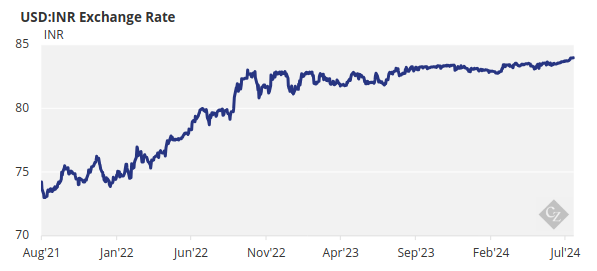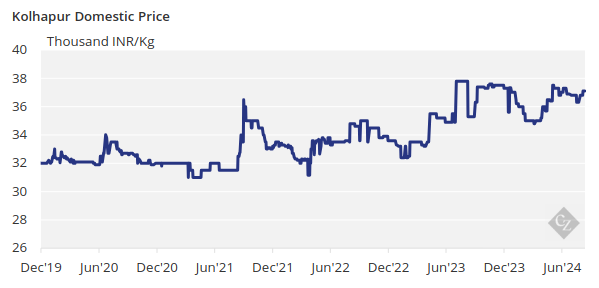Insight Focus
Raw sugar export margins are negative. The monsoon rains have brought normal levels of rainfall. The government have not authorised any sugar exports for 2024/25.
Introduction
India, the world’s second-largest producer of sugar, aims to blend 20% ethanol in gasoline by 2025.
This ethanol will be made from sugar cane and various grain feedstocks, which means many Indian mills now have a choice about how they use the sucrose in the cane. We will show the choices they are making in this report.
Maharashtra Sugar Imports/Exports
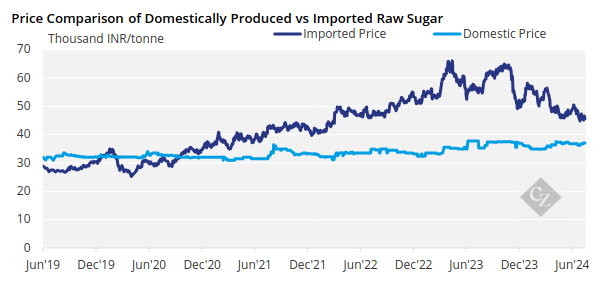
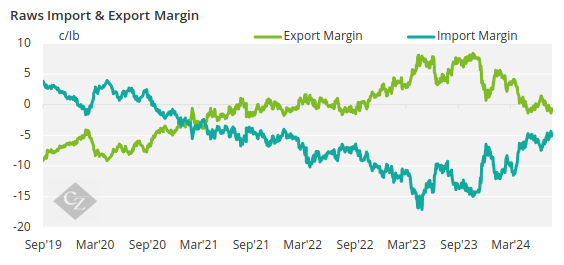
Domestic sugar prices traded slightly higher at INR 37,100/tonne.
Raw sugar export margins are negative once again, following the price weakness in the sugar market. If mills were to export to the world market today, they would earn 0.9c/lb below the domestic price.
By contrast, refined sugar export margins are positive, however the margins are very small as refined sugar prices keep slipping. Mills would earn USD 6/tonne currently over the domestic market if they were able to export.
The government hasn’t authorised sugar exports for 2023/24 or 2024/25 production at this stage and have no plans to do so indefinitely, so the above discussion remains theoretical.
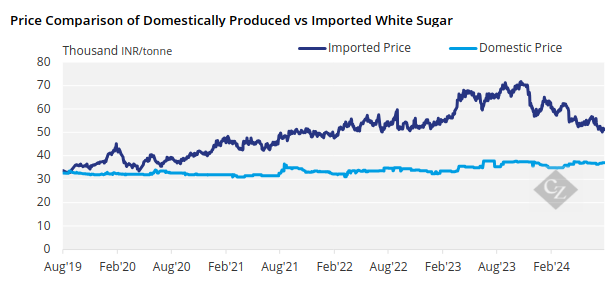
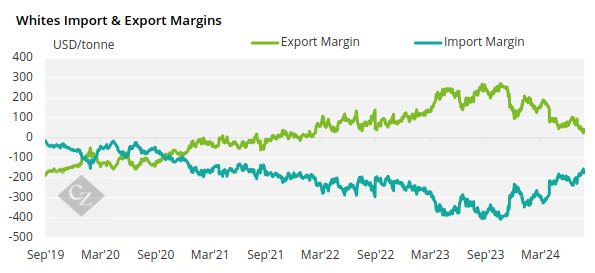
We expect that the earliest the government would authorise exports is at the start of 2025 when it has a better idea of sugar stock levels and expected output in 2024/25. India built sugar stocks in 2023/24 and if next season is also a surplus sugar season, we could see a few million tonnes of exports if prices pick up from today’s level.
For now, the government’s priority will be to ensure sufficient supply for the local market to keep domestic prices under control and to redirect more cane to meet the E20 blending mandate.
Ethanol vs Sugar
Many mills/distilleries have a choice over which feedstocks they use to make sugar or ethanol based on the relative prices of ethanol paid by the oil marketing companies.
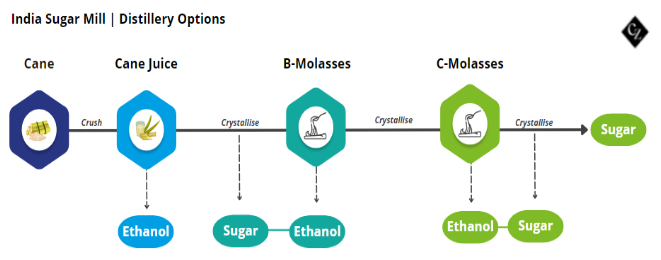
Monsoon rains are still going strong and have come in at normal levels across all major cane growing regions. Rainfall is of course positive for sugarcane growth and could potentially lead to better yields next season. We further think India could divert up to 3.3m tonnes of sucrose to ethanol as cane growth is looking promising.
Earlier in the year mills were incentivised to use C-molasses instead of B-molasses and cane juice. The amount of sugar produced from C-molasses vastly outweighs ethanol production compared to using B-molasses and cane juice, resulting in less revenue generated by the mills as seen in the chart below:
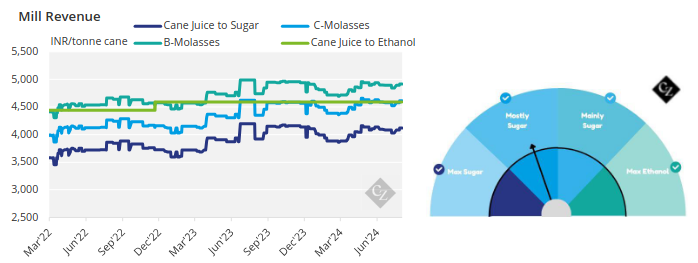
Here are the current prices paid for ethanol by feedstock:
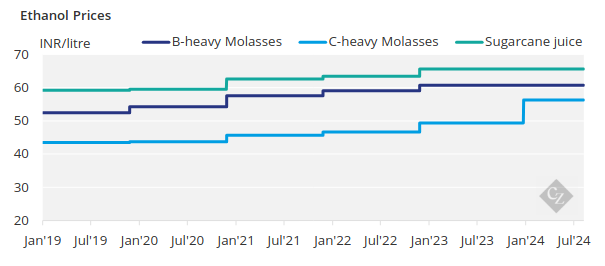
Appendix
